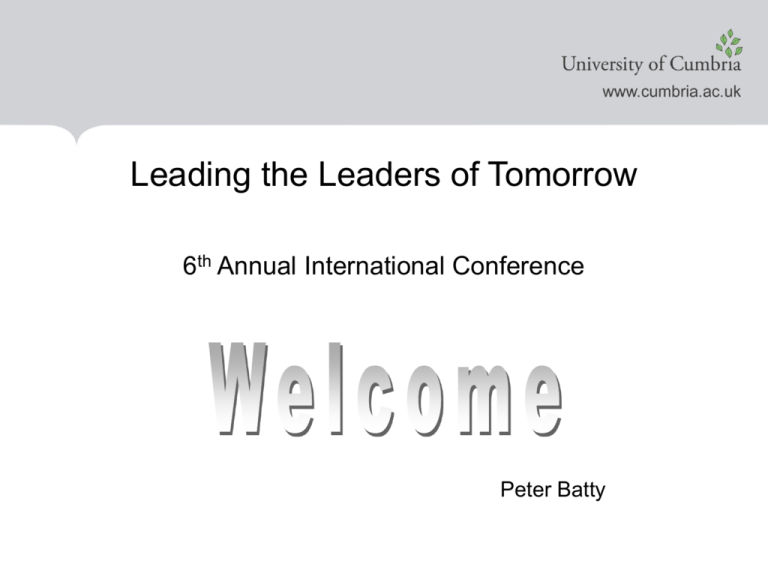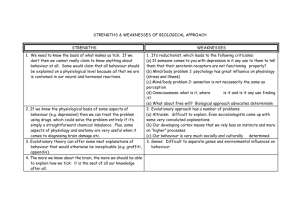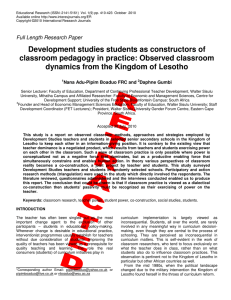Para Language
advertisement

Leading the Leaders of Tomorrow 6th Annual International Conference Peter Batty Introductions: • Who you are • Where you work • One thing you really enjoy about what you do Effective Communication Effective communicators share four characteristics. They…. Effective Communication Effective communicators share four characteristics. They: • are aware of their behaviour - they know what behaviours they are using and how effective they are being • are in control of their behaviour - they tend to choose their communication behaviour consciously and deliberately • have options – they choose between a range of possible ways of behaving according to the demands of the situation • are flexible – they can adapt their behaviour during interactions according to the responses they are getting from other people Effective communication INTERACTIVE CHOICES MOTIVATION MINDSET CLIMATE The OK Corral I’M NOT OK YOU’RE OK (- +) Characteristics: Feelings of inadequacy and powerlessness, withdrawal, undervaluing of own skills and abilities, running away from problems I’M NOT OK YOU’RE NOT OK (- -) Characteristics: Hopelessness, sense of getting nowhere, “why bother”, cynicism, stubbornness, obstinacy, sense of glee when things go wrong. I’M OK YOU’RE OK (+ +) Characteristics: Mutual respect, collaboration, constructive approach to problems and disagreements, optimism, confidence, refusal to put self or others down. I’M OK YOU’RE NOT OK (+ -) Characteristics: Smugness, superiority, competitive regardless of effect on others, will put others down, hostility, looking for errors by others. The Okay Corral • What is your default position? • What are the triggers that push you there – and the signals that this is happening? • What strategies do you use to get back to I’m OK You’re OK? Effective communication INTERACTIVE CHOICES MOTIVATION MINDSET CLIMATE Maslow’s Hierarchy of Needs Self Actualisation Ego & Self Esteem Social Needs Security & Safety Needs Physiological Needs - Basic Survival Physiological Security/Safety Social Ego & Self Esteem Self Actualisation Food, Shelter, Warmth Pension, Job, Health Belonging, Friendship Recognition, Respect, Status Growth, Development, Achievement Effective communication INTERACTIVE CHOICES MOTIVATION MINDSET CLIMATE INTERACTIVE CHOICES Body Language Spoken Language (your gestures, expression etc) (the words you use) Para Language (the use of your voice) Listening and using silence INTERACTIVE CHOICES Body Language 55% Para Language 38% Spoken Language 7% Listening and using silence INTERACTIVE CHOICES Body Language Spoken Language Stance / Posture Tell/ask balance Direction Clarifying behaviour Proximity Level and balance of reaction Eye contact Gesture Facial expression Structuring Initiating ideas Para Language Listening, Tone / Pitch silence… Volume …and Speed interruption





